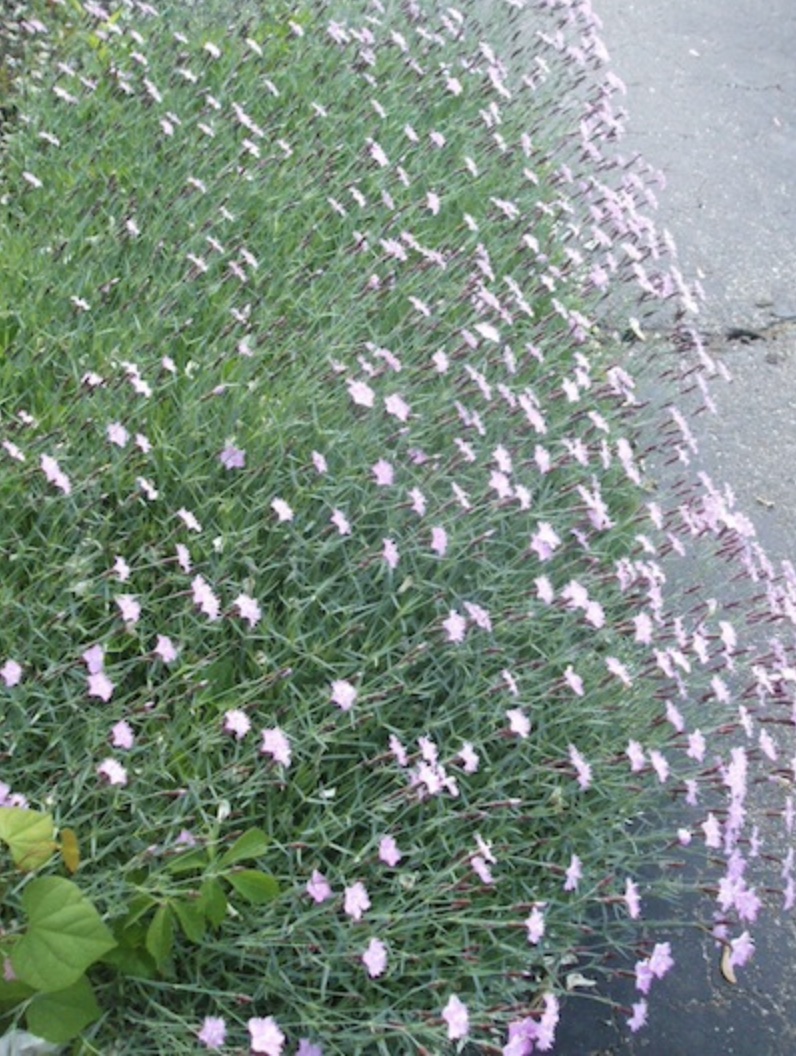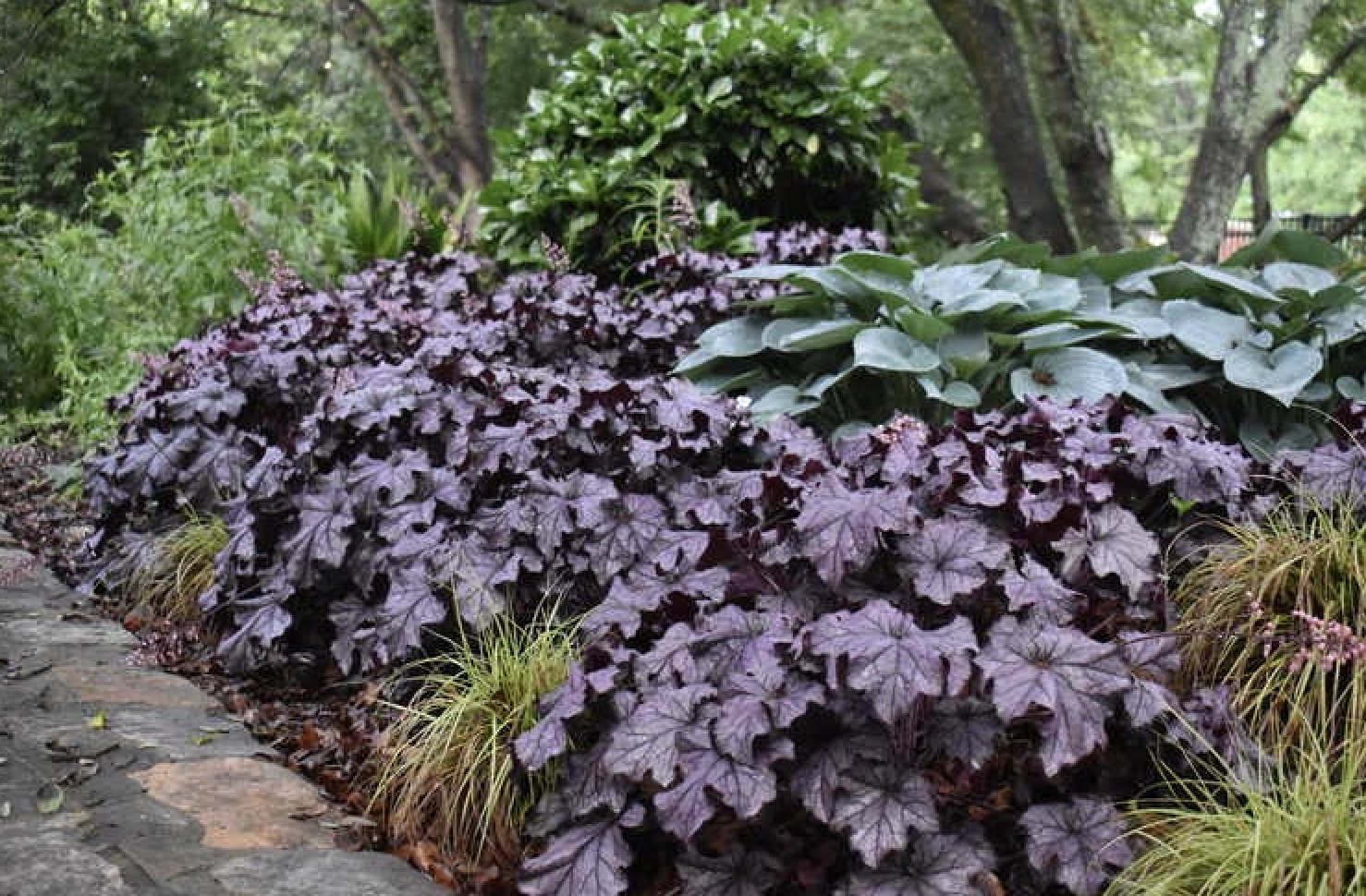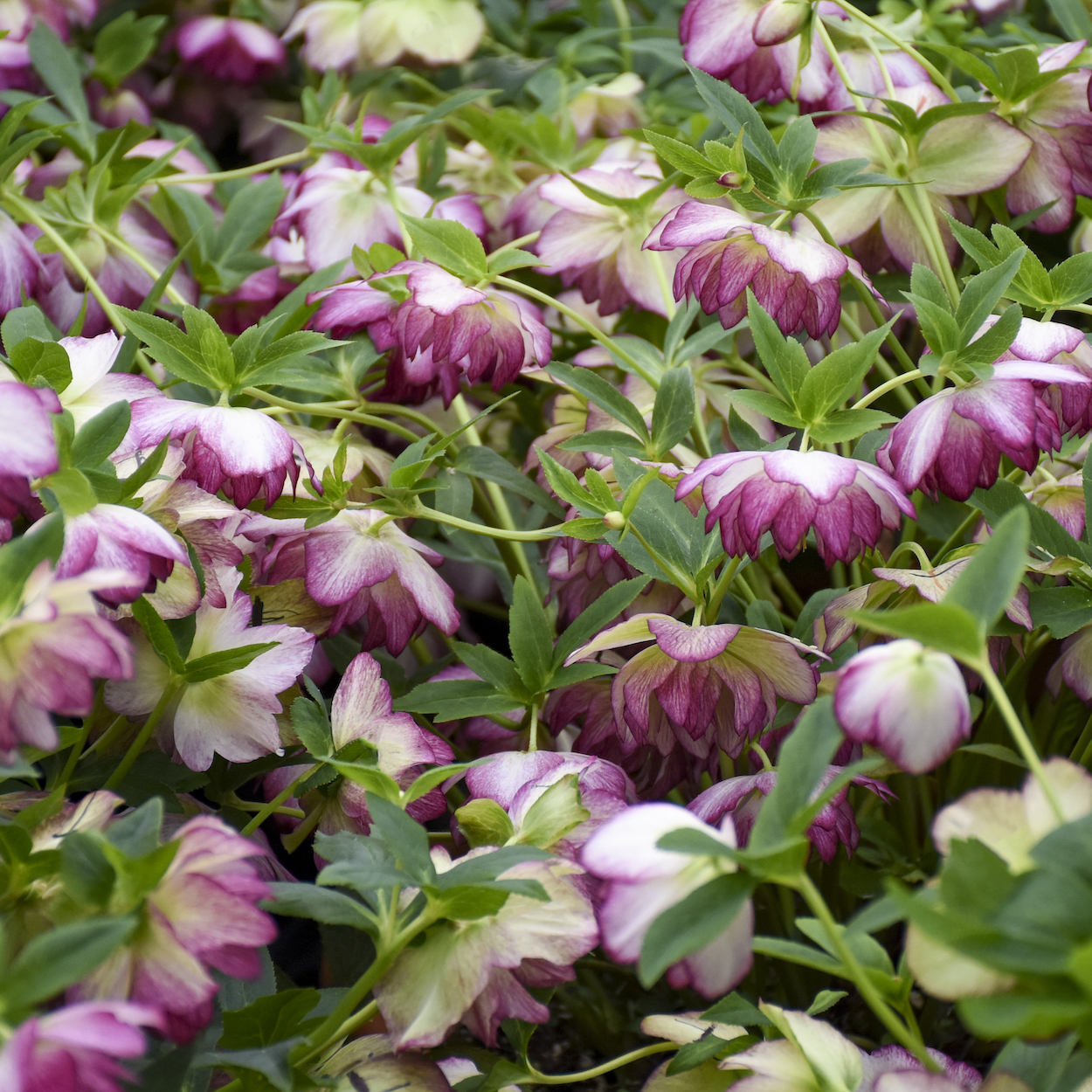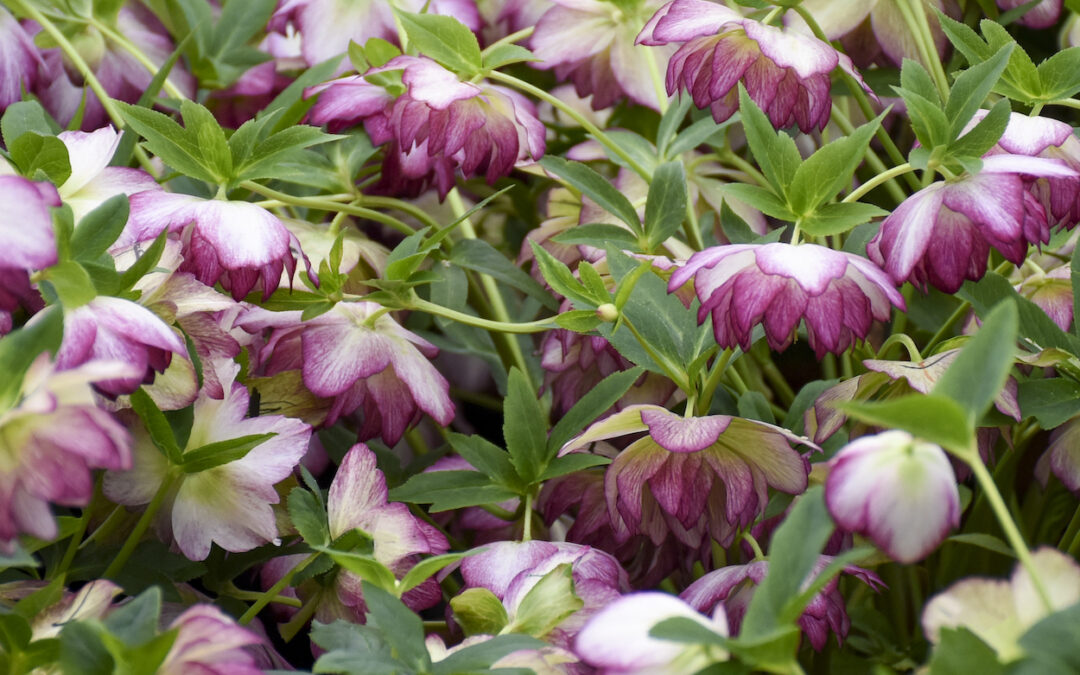
Fragrant ‘Bath’s Pink’ Cheddar pinks dianthus is a touch plant for dry hot spaces. (C) Photo Jo Ellen Meyers Sharp
Say evergreen, and most people think of conifers like pine, spruce and arborvitae. Gardeners may even know of boxwoods or rhododendrons, which are broadleaf evergreens. But there’s another group of plants that performs an evergreen role for three to four seasons in the Indiana landscape.
Although most perennials are herbaceous (winter kills them to the ground), there are several that hold on to their green or blue foliage throughout the season. Here are three evergreen or semi-evergreen perennials to consider for your Indiana landscape with tips of planting and growing them.
In this article
Cheddar pinks
Coral bells
Hellebores
Call a Holeman professional
Cheddar pinks (Dianthus gratianopolitanus)
Talk about fragrant. Cheddar pinks are members of the carnation family, and the small flowers perfume the area in late spring into summer. Named for the Cheddar region of England, they are called pinks because the flowers look like they’ve been trimmed with pinking shears.
One of the best for year-long color and stamina – you can even walk on it – is ‘Bath’s Pink’. It has pink flowers with white rings at the center. Cheddar pinks practically grow on concrete or asphalt.
Blue leaves year-round
The evergreen perennial has nickel-size pink flowers in spring and early summer. For the rest of the year the blue foliage keeps its color and hugs the ground. Grow in full sun. ‘Bath’s Pink’ can take it hot and dry. Cut flowers and place in a small vase for lovely fragrance indoors.
About the only maintenance for this dianthus is removing spent flowers. If the plant creeps onto asphalt or concrete, just chop it off and transplant the pieces or give them to friends. Transplanting is easy. Rough up the soil in the new spot, tamp the plant to the soil and water.
Coral bells (Heuchera spp.)
Coral bells are found only in North America, and breeders have done a lot of work to bulk up the native plants’ size, vigor and flower power. Gardeners appreciate these native perennials for their leaves as well as the flowers. Coral bell foliage comes in dozens of colors and patterns. Some even change colors as they go through the season.
Use coral bells to edge a bed or plant them in clusters of three, five or seven. The later presents quite a show. Consider planting them in a quilt pattern, which you’ll be able to enjoy even in winter. Planting coral bells in clusters or as an edging plant enhances the flowers’ beauty. Cut flowers to add an airy look to an indoor arrangement.
Native coral bells in containers
Coral bells also work well as container plants, frequently going from spring to fall as companion plants are changed around them. Transplant to the ground in fall, if desired. If the pot is large, the coral bells will probably survive freezing temps as part of a winter arrangement.
If coral bells have a weakness, it’s that they sometimes get heaved out of the ground in winter. If you see this, gently push the plant back into the soil, usually with no harm done. Winter-tattered leaves of coral bells can be snipped off in spring.

‘Grande Amethyst’ coral bell pairs nicely with a blue-leaf hosta. Photo courtesy JC Raulston and terranovanurseries.com
Hellebores (Helleborus spp.)
Who doesn’t want a plant that blooms in winter? Christmas rose (H. niger) blooms even in snow. And in early spring, hellebore cultivars (H. x hybridus) quickly follow. The green leaves are thick and leathery, some palm-like.
Although known for doing ok in dry soil and shade, hellebores do best when given part sun and a soaking or two of water during dry periods. Plant older varieties on a rise, berm or slope, where the downward facing flowering can be appreciated. Newer varieties have upward or outward facing flowers. Plant them as clusters or clumps of odd numbers for the best impact.
Flowers throughout Indiana winters
Hellebore flowers can be cut for indoor enjoyment. The flowers frequently are floated in bowls of water as a tabletop decoration. All parts of hellebores are toxic, so keep that in mind if children or pets are around. Wear gloves when working with hellebores to reduce the chance of contact dermatitis.
About the only maintenance is to remove winter damaged leaves. This may not be necessary every year. Use care when snipping the leaves because the flower buds lurk among them. Hellebores cultivars bloom well into June.

‘Blushing Bridesmaid’ heuchera. Photo courtesy PerennialResource.com
Call your Holeman pro
Talk to your Holeman landscape professional landscape architect or designer about incorporating these plants in the Indiana landscape.

